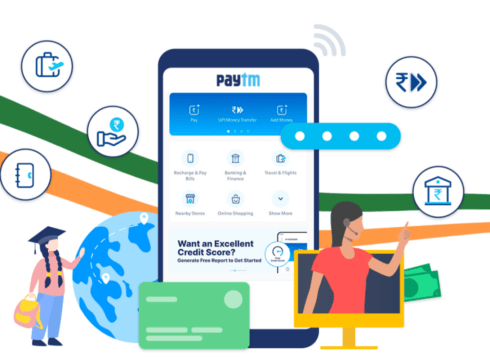Paytm tamped down its marketing spend by 62% to INR 532.32 Cr amid the pandemic in FY21 as digital adoption went up
The company has built up other revenue friendly merchant payment solutions and services such as Paytm Payouts for business payroll, Paytm Money, insurance and credit
The company is planning to raise INR 21,800 Cr ($3 Bn) in an initial public offering (IPO) by November this year
Inc42 Daily Brief
Stay Ahead With Daily News & Analysis on India’s Tech & Startup Economy
Indian digital payments giant Paytm has launched a guaranteed cashback offer to reward key merchants with an allocation of INR 50 Cr for the scheme. Under the offer, merchants with the most number of transactions made through Paytm app before Diwali will be rewarded with certificates for being the top merchants and will also receive free Soundbox, IoT devices and many such rewards.
Customers, who scan the Paytm QR code at the stores to pay through the Paytm app, will also receive cashback on each transaction.
Interestingly, the fintech giant, which has filed its IPO prospectus for a $3 Bn public listing, has been cutting back on its marketing expenses (which includes discounts and cashbacks) in order to move towards profitability.
While Paytm spent a staggering INR 1,397.05 Cr on marketing in the financial year ending March 2020, the digital payments company tamped down its marketing spend by 62% to INR 532.32 Cr amid the pandemic in FY21 as digital adoption went up.
“We used to spend $20-25 Mn a month on cashbacks before, but now we spend $1 Mn but are still gaining the market share,” Paytm founder and CEO Vijay Shekhar Sharma earlier said at The Makers Summit hosted by Inc42 in March this year.
The company saw its overall revenue take a hit amid the pandemic as it fell 9.9% from INR 3,540.77 in FY20 to INR 3,186.8 in FY21 on a consolidated basis. On the verge of a $3 Bn initial public offering, the fintech behemoth’s losses narrowed 42% to INR 1,704.01 Cr from INR 2,943.32 Cr in the same period.
One reason for the cashback drive could be that it wants to capitalise on the jump in UPI payments in June after a drop in two consecutive months in April and May. Moreover, Paytm’s UPI market share has also been seeing dips, which although small, may dampen investor sentiment ahead of a big bang public listing.
Inc42 had reported that in April, both Google Pay and Paytm had lost a percentage point each in market share each on a month-on-month basis. In May, their market share shrank marginally although not as much as in April. While the app-wise data for June has not been released by the National Payments Council of India (NPCI) yet, the gradual recovery from Covid-19 second wave had a positive impact on the UPI ecosystem as it reported a month on month 10% spike in transaction volumes and 11.5% spike in value of transactions to INR 5.47 Lakh Cr.
Among the key strengths for Paytm is its relatively lower dependence on UPI payments for growth or revenue. A Bernstein report recently noted that maintaining UPI market share requires a lot of marketing spending with no real revenue coming back. This has been seen in our in-depth analysis of the UPI payments sector as well, which is why other players are also looking to diversify like Paytm has done in the past 10 years. So instead of focussing on UPI, Paytm has built up its more revenue-friendly merchant payments solutions, as well as other services such as Paytm Payouts for business payroll, Paytm Money, insurance, credit and more.
{{#name}}{{name}}{{/name}}{{^name}}-{{/name}}
{{#description}}{{description}}...{{/description}}{{^description}}-{{/description}}
Note: We at Inc42 take our ethics very seriously. More information about it can be found here.


